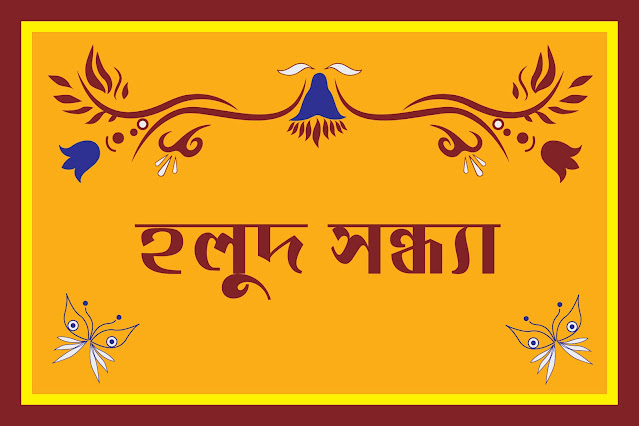Gaye holud Banner and Background | Free Image, stock vector, psd
Bengali tradition gaye holud
বাঙালি বিবাহের ঐতিহ্যবাহি একটি অংশ হচ্ছে গায়ে হলুদ বা হলুদ সন্ধ্যা
About Bengali tradition gaye holud
Gaye Halud (literally, turmeric-smeared body) an important part of the wedding rituals in Bangladesh, is a beautifying and blessing ceremony that has been observed since ancient times. Newlyweds are believed to be vulnerable to misfortune and the evil eye. Hence, various types of rituals, including the gaye halud/ holud sandha ceremony, are observed in order to give protection to the bride and bridegroom. In Hindu society this ceremony/function is known as gatra haridra or adhivas and dates back to Vedic times. Muslims refer to it as gaye halud/holud sandha/গায়ে হলুদ, haldi kota, tilwayi, kud deoya, etc. Though Muslims from Persia, Arabia, Turkestan brought with them their own marriage/wedding rituals, they adapted many local customs and rituals including gaye halud.
Smearing the bodies of the bride and the bridegroom with turmeric and other cleansing or sweet smelling ingredients one, three, five or seven days before the marriage ceremony is the main ritual of gaye halud/ holud sondha.
Marriage Anniversary Wishes Message
Turmeric is thought antiseptic and purifying. It is also a cosmetic, lending a golden glow to the dark Bengali skin. It is also traditionally believed to provide protection against evil spirits. Besides turmeric paste, some other ingredients are also used in this ceremony: paddy, durva grass (a kind of grass), sesame, barley-corn, mustard seed, dried ginger, sandalwood, vermilion, henna, various kinds of seeds, sweets, fish and a lamp with five wicks etc. It is believed that these will bring good fortune and fertility.The gaye halud / halud sandha ceremony is observed separately in the houses of the bride and the bridegroom. The ceremonial ingredients are sent from one house to the other in a grand manner. Decorated stages are made for seating the bride and bridegroom.
All the ingredients are put on colourfully decorated bamboo trays for performing the ceremonial rites. The mother, grandmother, friends and other elderly relatives apply a dab of turmeric on the bride/ bridegroom and offer sweets. Younger relatives and friends then take turns to apply turmeric. Guests are entertained with special food and sweets, including various types of pithas (rice cakes) . Music plays an important part on this occasion, with women and girls singing songs, commonly known as meyeli git, often composed especially for this ceremony. The traditional songs reflect the significance of marriage rituals and the Photo of a happy family. The songs which are made up for the purpose make fun of the members of the other party. Thus the groom's side will make fun of the members of the bride's family and others. After the ceremony is over, the bride traditionally continues to be rubbed with turmeric paste until the day of the wedding, when she takes a ritual bath.













